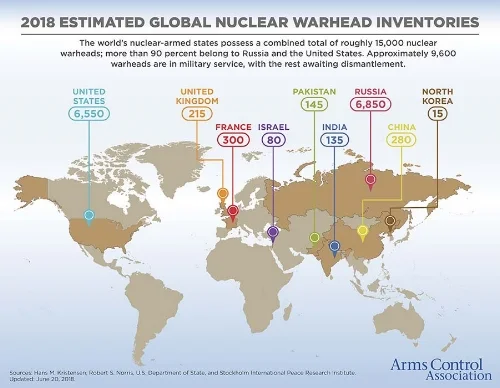Factsheets
Learn more about nuclear weapons using these resources!
Nuclear Weapons and the Environment
A fact sheet on the environmental impacts of nuclear weapons.
Nuclear Weapons and Human Health
A fact sheet on the human health impacts of nuclear weapons.
Nuclear Weapons and Social Justice
A fact sheet on the impacts of the nuclear weapons production system on our communities.
Nuclear Weapons and the Economy
A fact sheet on the economic impact of nuclear weapons.
US Nuclear Weapons Rebuild and the New Nuclear Arms Race
A fact sheet on the modernization of the US nuclear arsenal.
Trident Submarine Facts and Figures
An informational sheet on the US trident submarines.
Arms Control Association Fact Sheets
The Arms Control Association's fact sheets provide a basic overview of key agreements and issues involving nuclear weapons.
How much do you pay for nuclear weapons?
Each April, Dr. Bob Dodge, President of PSR-Los Angeles calculates the cost of nuclear weapons programs to our communities. Use the calculator to find out what you spent on nuclear weapons programs in 2017.
How would you spend $1 trillion?
This visualization tool created by the Future of Life Institute puts the amount the US is spending on upgrading the nuclear arsenal in perspective.
"Joining the Conversation"
Created by Jonathan Deaton
This 5-minute video shows what happens when college students are asked about nuclear weapons. Jonathan's short film won first prize in the Student Category of Physicians for Social Responsibility's Nukebusters Short Film Contest in 2015
Dr. Ira Helfand speaks on nuclear weapons at TEDx Vail
As health professionals, we recognize that any detonation of a nuclear weapon, whether by accident or design, would cause devastation and suffering almost beyond imagine. Our motto is: “Prevention is the only cure.” PSR's Dr. Ira Helfand spoke at TEDx Vail (Jan. 8, 2016) on this threat and what we can do to eliminate it.”
"I wish I didn't know that."
This tool created by the Union of Concerned Scientists highlights real-life stories of close calls, screw ups, and nuclear misses.
The Doomsday Clock
For the last two years, the minute hand of the Doomsday Clock stayed set at three minutes before the hour, the closest it had been to midnight since the early 1980s. Now, it has been moved to two minutes to midnight. When they made this decision, the Science and Security Board warned: “The probability of global catastrophe is very high, and the actions needed to reduce the risks of disaster must be taken very soon.”











